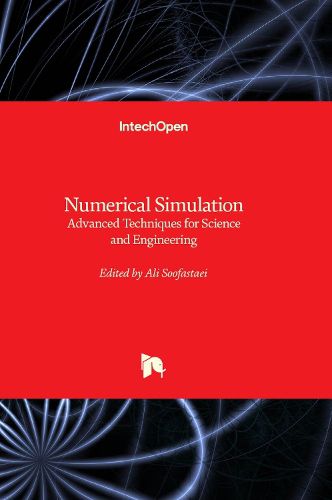Readings Newsletter
Become a Readings Member to make your shopping experience even easier.
Sign in or sign up for free!
You’re not far away from qualifying for FREE standard shipping within Australia
You’ve qualified for FREE standard shipping within Australia
The cart is loading…






This title is printed to order. This book may have been self-published. If so, we cannot guarantee the quality of the content. In the main most books will have gone through the editing process however some may not. We therefore suggest that you be aware of this before ordering this book. If in doubt check either the author or publisher’s details as we are unable to accept any returns unless they are faulty. Please contact us if you have any questions.
Numerical simulation is a powerful tool used in various fields of science and engineering to model complex systems and predict their behavior. It involves developing mathematical models that describe the behavior of a system and using computer algorithms to solve these models numerically. By doing so, researchers and engineers can study the behavior of a system in detail, which may only be possible with analytical methods. Numerical simulation has many advantages over traditional analytical methods. It allows researchers and engineers to study complex systems' behavior in detail and predict their behavior in different scenarios. It also allows for the optimization of systems and the identification of design flaws before they are built. However, numerical simulation has its limitations. It requires significant computational resources, and the accuracy of the results depends on the quality of the mathematical models and the discretization methods used. Nevertheless, numerical simulation remains a valuable tool in many fields and its importance is likely to grow as computational resources become more powerful and widely available. Numerical simulation is widely used in physics, engineering, computer science, and mathematics. In physics, for example, numerical simulation is used to study the behavior of complex systems such as weather patterns, fluid dynamics, and particle interactions. In engineering, it is used to design and optimize systems such as aircraft, cars, and buildings. In computer science, numerical simulation models and optimization algorithms and data structures. In mathematics, it is used to study complex mathematical models and to solve complex equations. This book familiarizes readers with the practical application of the numerical simulation technique to solve complex analytical problems in different industries and sciences.
$9.00 standard shipping within Australia
FREE standard shipping within Australia for orders over $100.00
Express & International shipping calculated at checkout
This title is printed to order. This book may have been self-published. If so, we cannot guarantee the quality of the content. In the main most books will have gone through the editing process however some may not. We therefore suggest that you be aware of this before ordering this book. If in doubt check either the author or publisher’s details as we are unable to accept any returns unless they are faulty. Please contact us if you have any questions.
Numerical simulation is a powerful tool used in various fields of science and engineering to model complex systems and predict their behavior. It involves developing mathematical models that describe the behavior of a system and using computer algorithms to solve these models numerically. By doing so, researchers and engineers can study the behavior of a system in detail, which may only be possible with analytical methods. Numerical simulation has many advantages over traditional analytical methods. It allows researchers and engineers to study complex systems' behavior in detail and predict their behavior in different scenarios. It also allows for the optimization of systems and the identification of design flaws before they are built. However, numerical simulation has its limitations. It requires significant computational resources, and the accuracy of the results depends on the quality of the mathematical models and the discretization methods used. Nevertheless, numerical simulation remains a valuable tool in many fields and its importance is likely to grow as computational resources become more powerful and widely available. Numerical simulation is widely used in physics, engineering, computer science, and mathematics. In physics, for example, numerical simulation is used to study the behavior of complex systems such as weather patterns, fluid dynamics, and particle interactions. In engineering, it is used to design and optimize systems such as aircraft, cars, and buildings. In computer science, numerical simulation models and optimization algorithms and data structures. In mathematics, it is used to study complex mathematical models and to solve complex equations. This book familiarizes readers with the practical application of the numerical simulation technique to solve complex analytical problems in different industries and sciences.